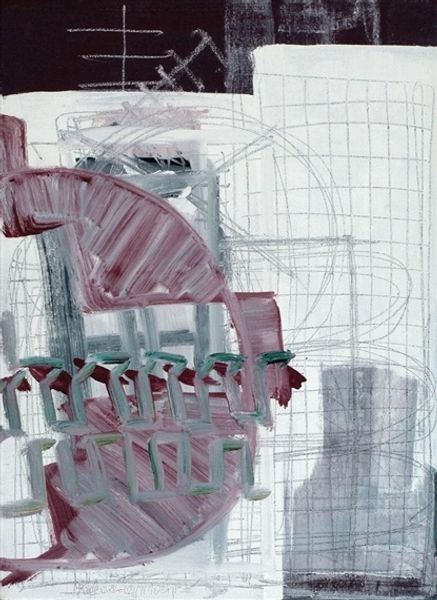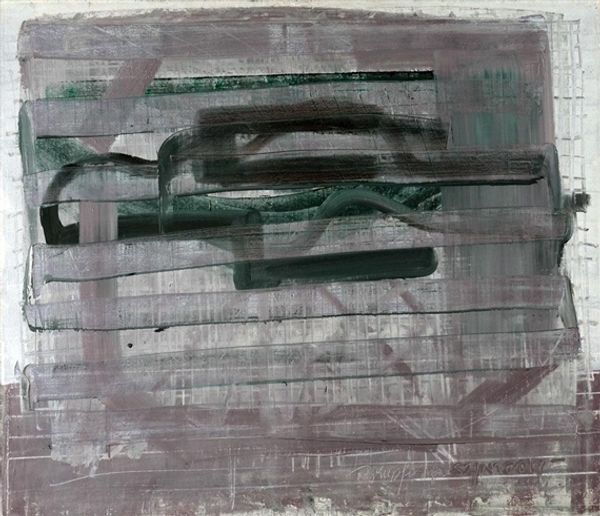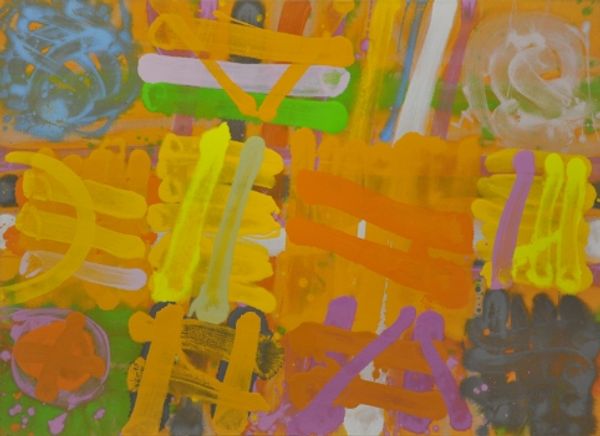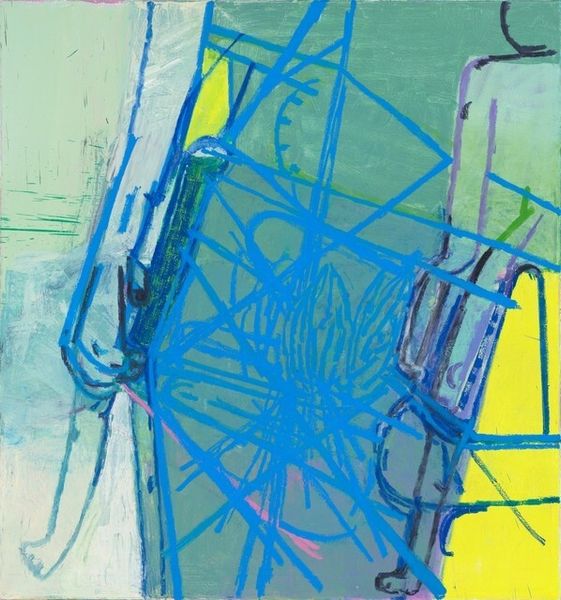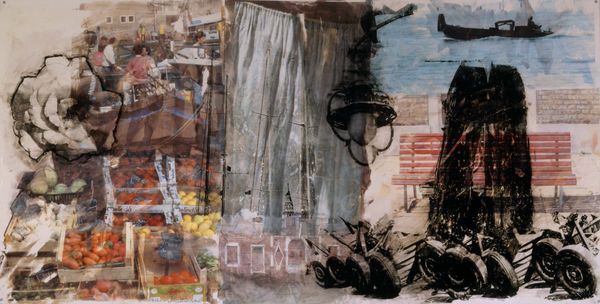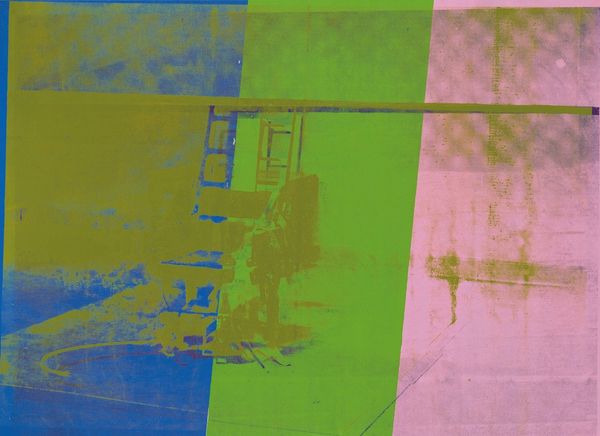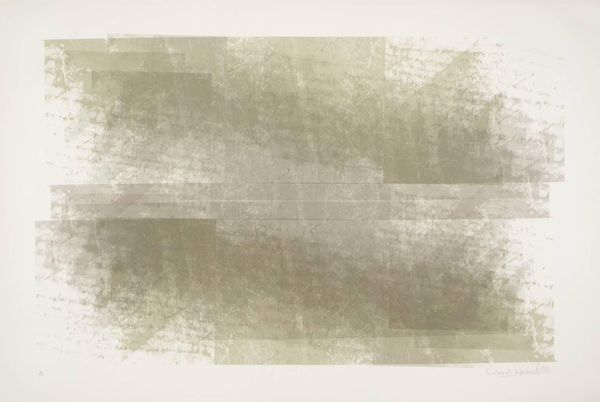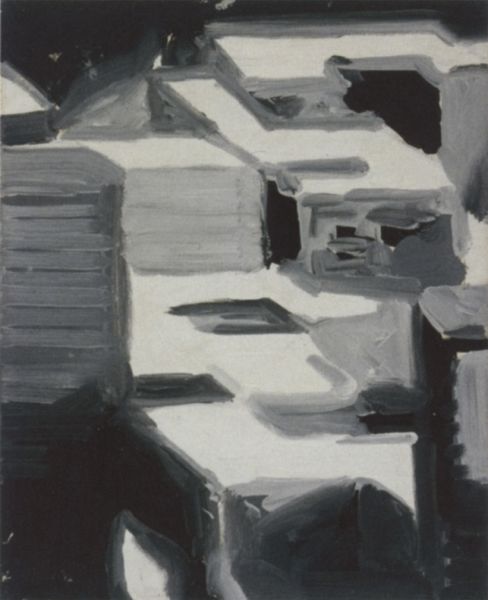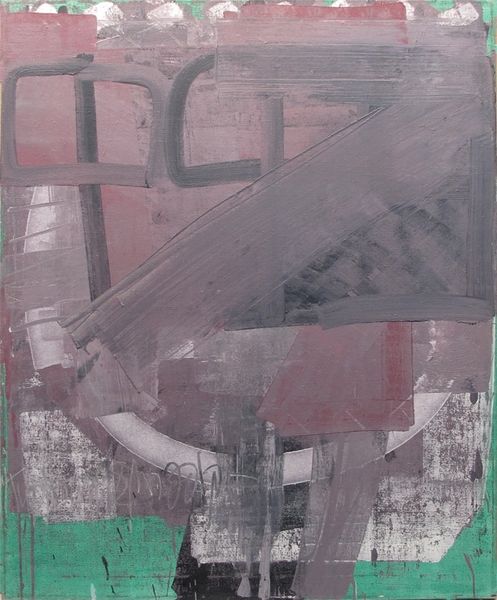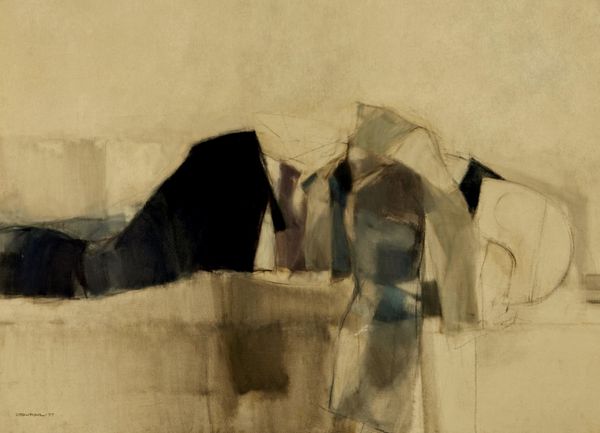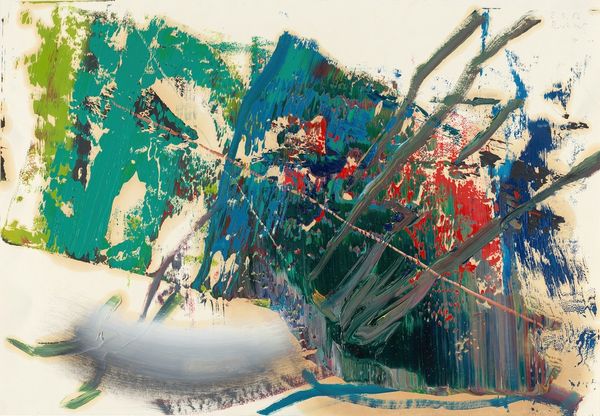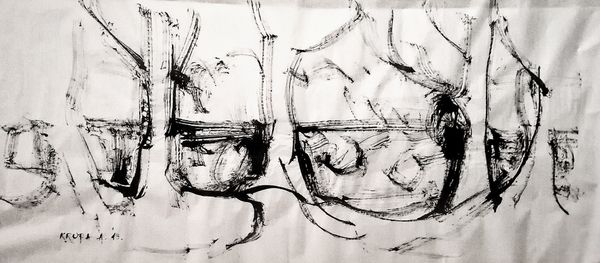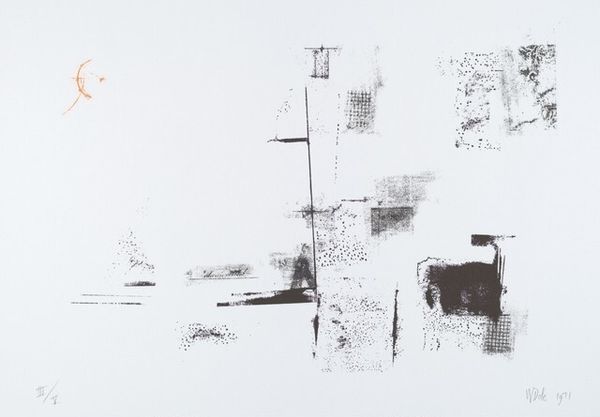
mixed-media, acrylic-paint
#
mixed-media
#
acrylic-paint
#
acrylic on canvas
#
geometric
#
abstraction
#
mixed media
#
modernism
Copyright: Moshe Kupferman,Fair Use
Editor: So, here we have Moshe Kupferman’s “Untitled” from 2003, done in mixed media, seemingly acrylic paint primarily. It feels... uncertain, almost hesitant in its geometry. What do you see in this piece? Curator: I see a reflection of post-war trauma and the search for meaning in a fractured world. Kupferman, a Holocaust survivor, often used abstraction to grapple with unspeakable experiences. His work embodies the struggle to rebuild and represent after immense destruction, often employing the visual language of Modernism. Notice how the composition refuses resolution; shapes intersect but don't quite connect, hinting at broken narratives and incomplete memories. How does that reading resonate with you? Editor: It makes sense. I didn’t know about the artist's background. Knowing that it's seen through that lens, it makes me think of damaged architecture and rebuilding – it gives those shapes purpose. Do you think the institutional art world’s embrace of abstraction allowed artists like Kupferman to explore these themes more freely? Curator: Absolutely. Museums and galleries became key sites for exhibiting and validating abstract art. This institutional support provided a platform for artists to explore complex themes, sometimes subtly, sometimes explicitly, and to engage with the public in new ways about historical experiences that were often suppressed. Editor: I'm starting to understand how an artwork’s cultural and historical context fundamentally changes the way we perceive its meaning. Thanks. Curator: And I appreciate your fresh perspective. It highlights the ongoing relevance of these works and our role in reinterpreting them within a contemporary context.
Comments
No comments
Be the first to comment and join the conversation on the ultimate creative platform.
